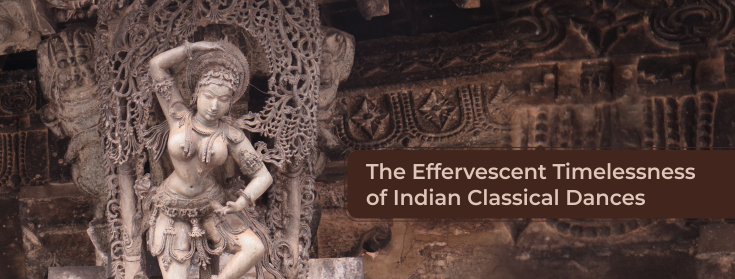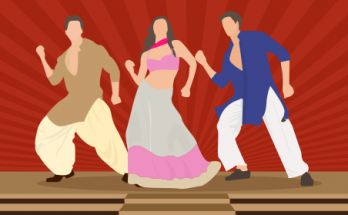I was watching the very beautiful performance by Srinika Purohit, the child prodigy of Odissi Dance on Youtube, and it was a revelation. It almost stopped my heart to watch such a young and tiny girl master the enormously complicated moves of the Odissi with such daring confidence, in a way that suggested that she might be doing this since her past life.
The beauty of Odissi dance, and any other Indian classical dance for that matter, depends on the various bhangas, or stances, that require immense flexibility on the part of the dancer. This is the reason why Indian classical dance is a discipline that reaps numerous rewards if initiated or inculcated from a very young age.
Srinika’s perfect movements and stances were a narrative of Krishna’s childhood spent in Vrindavan and his relationships with his family and people. It beautifully narrated a time of simplicity; of earthen pots and cow herders and fields, when women used to get water from the stream and people lived in houses made of mud and straws.
This got me thinking….how old must be the tradition of classical dances. No one knows for sure how old they are, but Natya Shastra, the ancient indian treatise in which indian classical dances like Bharatnatyam or Odissi find their theoretical foundations, was compiled somewhere between 200 BCE and 200 CE. Apparently, most of the classical dances that we see today have emerged from the devadasi tradition, in which skilled dancers used to perform as a form of deity worship. The dances were performed in the numerous Hindu temples, by women who were taught the art from a very young age.
How is it that a cultural tradition, going on for such a looooooong time, far from being extinguished, is actually becoming stronger? All over the world, the beauty of Indian classical dances is being recognized, with classical dancers being sought after for a variety of global shows and events. Additionally, a lot of Non-Indian students are becoming fascinated with learning classical Indian dance forms and techniques. They go above and beyond to understand and appreciate the ancient symbolism associated with many of the mudras and steps of Bharatanatyam, Odissi, Kuchipudi or Kathak.
So is the special quality about our classical dances that has sustained them for so long? On introspection, it seems there is no one reason, but a whole lot of little reasons.
Indian classical dances are a reminder of our cultural history
It seems that the more forward we go, the more nostalgic we get. The more complicated our lives get, the more we want to return to simplicity. With the ever-growing hunt for original and novel content, we are turning inwards and looking towards our own history to find it. In such a scenario, the Bharatnatyam, the Odissi, the Kathak, and all the other classical dances are offering a treasure trove of new stories that are not entirely unfamiliar.
One of the most common stories, of course, in classical dances is the story of Krishna. With themes like Gat Nikas (character portrayals of Krishna and Radha through half-turns), Kavita (song-poems depicting episodes like Kaliya, Govardhan Lila, etc.) and Thumri (musical compositions exhaustively covering the entire gamut of emotions, situations, expressions and episodes of Krishna legends). All these themes express the immense simplicity and beauty of ancient times, which has been and is still capturing our imaginations.
Indian Classical Dances have Adapted to Changing Times
But it is not just the old yesteryear storytelling ability of Indian classical dances that has made them timeless. If the ancient classical dances have originated from an ancient tradition, they have also been flexible enough to accommodate new traditions and practices.
Just ask Pooja Pant, a trained Kathak Dancer and choreographer, who has done various shows in and outside the country. Pant’s choreography, especially her piece called ‘Play Store’ is a perfect example of this adaptability. This piece was a summation of our virtual reality that we have surrounded ourselves with- Candy crush, Video games, phone screens, etc. these are all elements of the post-modern society that shows up in her piece ‘Play Store’. When it comes to adaptability, Pant has a clear stand. According to her, its a myth that Kathak can only elaborate a centuries-old culture and tradition, but that is far from reality. The movements and signage of Kathak are perfect for bringing a balance between the traditional and the modern.
Another perfect example is another piece choreographed by Pooja Pant, called ‘Story of T-shirt’. This piece is an expression of the harmful impact of chemicals used in the textile industry on the environment.
So you see, our classical dances are not just about the past. It’s also about the present, and can also be about the future.
Universal and Relevant Beauty
A truly, universally beautiful thing never goes out of fashion. Of course, the biggest factor behind the immortality of our indian classical dances is their own universal beauty, which has made them able to transcend time.
Think about it. Any form of Indian classical dance is a form of faith, as has been evidenced by the Devadasi tradition of ancient India. These dances were offered to our gods as a form of worship, so much so that overtime, they themselves became the divine. As time progressed, the discipline involved in learning and teaching these art forms became a regimen that has today become synonymous with perseverance, dedication and a self-sustaining faith in the divine.








